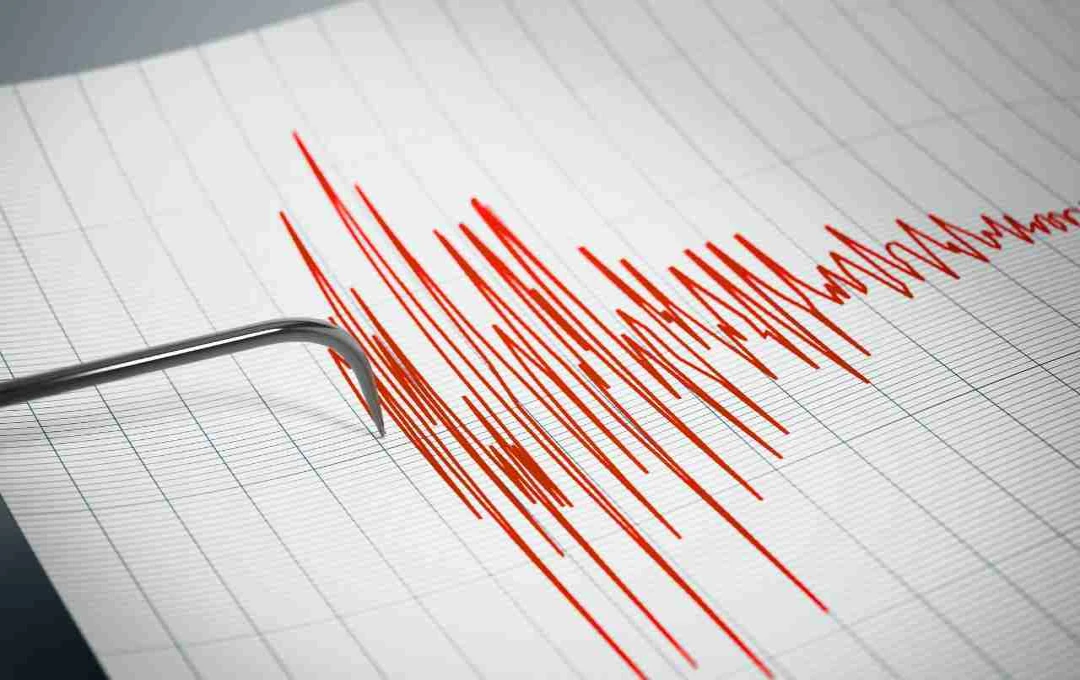A 3.4 magnitude earthquake struck Sonipat, Haryana, late on Friday night at 1:47 AM. As soon as the tremors were felt, people woke up from their sleep and rushed out of their homes. The earthquake's epicenter was at a depth of 10 km. According to experts, this area falls under Seismic Zone-4, where minor tremors are common.
Sonipat Earthquake: In Sonipat, Haryana, people woke up from their sleep and exited their homes due to earthquake tremors around 1:47 AM on Friday night. The earthquake measured 3.4 on the Richter scale, with its epicenter at a depth of 10 kilometers. This region falls under Seismic Zone-4, which is considered a moderate to high-risk area. According to experts, Delhi-NCR experiences frequent earthquakes due to its proximity to the Himalayan collision zone and the presence of active fault lines.
Epicenter at a Depth of 10 Kilometers
The earthquake's epicenter was located approximately 10 kilometers deep in the Sonipat district. According to the National Center for Seismology, its location was recorded at 28.99 North latitude and 76.97 East longitude. Although the intensity was not high, the late hour created an atmosphere of fear among the people.
People Suddenly Rushed Out of Homes at Night
When the earthquake tremors were felt, most people were in a deep sleep. Doors and windows in many homes began to rattle. In several areas of Sonipat, people rushed out of their homes to find a safe place. Although the tremors were mild and subsided within a few seconds, people were still startled due to the late hour.
Sonipat is an Earthquake-Sensitive Zone
Experts state that Sonipat and its surrounding areas are considered sensitive to earthquakes. Minor tremors frequently occur here. According to scientists, the region's geological structure and nearby active fault lines make it more prone to seismic activity.
Why Delhi-NCR Experiences Frequent Tremors
There are geographical reasons behind the frequent earthquakes in the Delhi-NCR region. This area falls under Seismic Zone-4, which is considered a moderate to high-risk earthquake zone. Delhi-NCR is approximately 250 kilometers from the Himalayan collision zone, where the Indian and Eurasian tectonic plates collide.
When these plates collide, a significant amount of energy accumulates within the Earth. This energy is released periodically in the form of earthquakes. This is why tremors are frequently felt in Delhi and its surrounding areas.
Which Active Fault Lines Are Present
Several active fault lines exist in Delhi and its surrounding areas. Key among these are the Delhi-Haridwar Ridge, Sohna Fault, Mahendragarh-Dehradun Fault, and the Yamuna River Lineament. Movement along these fault lines causes frequent tremors in the surrounding regions. Experts believe this is why the NCR region repeatedly experiences the effects of earthquakes.
Earthquake Measurement on the Richter Scale
The Richter scale is used to measure earthquake intensity. On this scale, earthquakes are assessed on a magnitude from 1 to 9. The earthquake in Sonipat had a magnitude of 3.4. According to experts, earthquakes with a magnitude of 3 to 5 are classified as moderate. These tremors typically cause minor damage. Earthquakes above 6, however, are dangerous and can cause widespread devastation.
Officials Continue Monitoring
Immediately after the earthquake, teams from the local administration and disaster management department monitored the situation. Currently, no damage has been reported from anywhere. Officials state that such minor tremors are common in this region. Nevertheless, full vigilance is being maintained, and the situation is continuously being monitored.
Fear Among People, But No Damage
People in Sonipat and the surrounding areas felt the late-night tremors and came out of their homes. In many localities, people remained outside for a long time. However, the comforting news was that no damage of any kind was reported. The earthquake was mild and subsided within moments.














